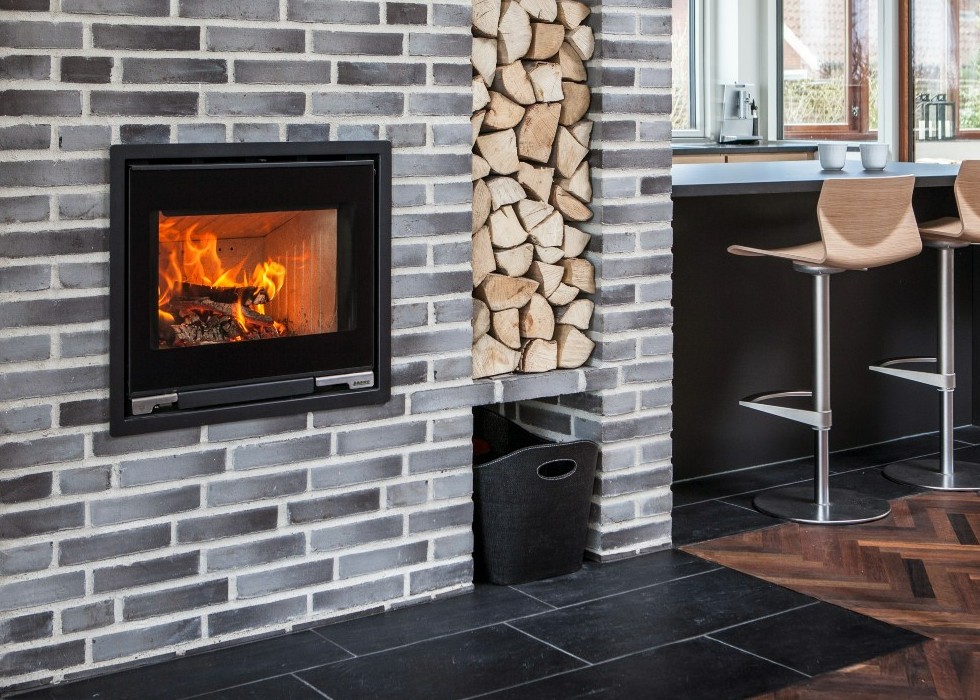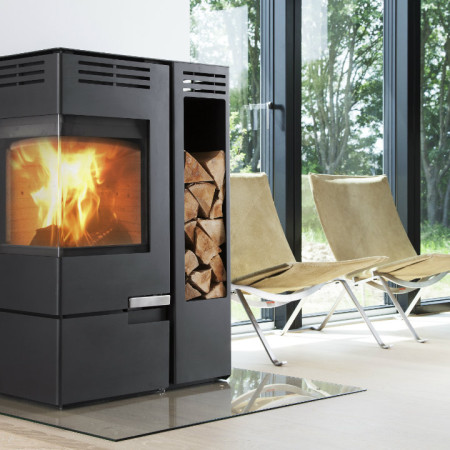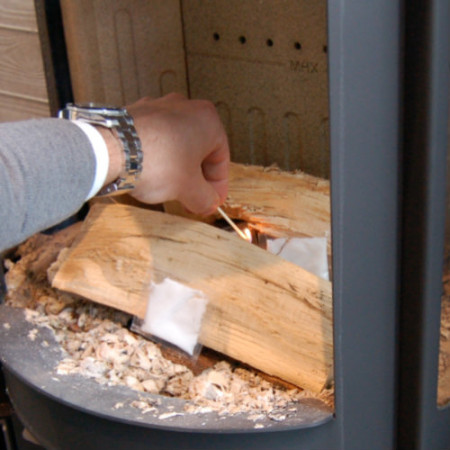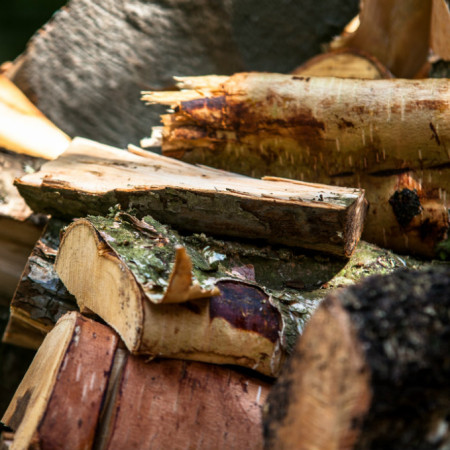The underfloor heating provides an even temperature, but cannot be adjusted from day to day
Most newer houses have underfloor heating, which can provide a nice, even temperature in the house when you adjust it correctly. Underfloor heating should be set to a fixed temperature because underfloor heating has a longer reaction time for temperature adjustments than other heating sources – like radiators. The reaction time depends on the material in which the floor heating pipes are installed; For example, if the floor heating is cast in concrete, the reaction time can be up to 12 hours. Therefore, it’s not possible to turn the heat down to save money when you’re at work and turn it up again when you get home.
Use the wood burning stove as a supplementary heating source when you’re at home
A combination of underfloor heating and the heat from a wood burning stove can be a great solution. Set the floor heating to a constant temperature a little lower than you actually need, and then use your wood burning stove to increase the temperature when you are home and need a higher room temperature. The wood burning stove provides immediate heat when you light a fire, just as you can quickly put out the fire when you don’t want to increase the temperature anymore. However, the combustion is best when the stove can burn for a few hours in a row and reach a high flue gas temperature. Lighting up and shutting the fire down in one go will also create more smoke and soot in the oven. Instead, set the underfloor heating to a lower level and use the heat from the stove as part of the primary heat source when you are at home.
Here is an example:
The days are getting colder and so is your home. Now you want to turn up the heat. You set the underfloor heating to a comfortable temperature of 23 degrees. But you also like the coziness of the fire and heat from the stove, so you fire up the stove in the evening. After a short time of firing, the temperature rises, and the heat may become too intense. However, since your underfloor heating has a long reaction time, you cannot just turn it off with immediate effect, and you will therefore have to vent some of the heat out by opening a window. That’s a waste.
Instead, you can do this: Set your underfloor heating to a lower level, e.g., 19 degrees. It will keep an even temperature throughout the day, and when you then get home from work and need a little more heat, you light up your stove and use the instant and direct heat to increase the temperature. The stove heat will be focused near and around the stove, but you can advantageously install a stove fan that distributes the warm air from the stove throughout the room.
Advantages of combining underfloor heating and wood burning stove
There are several advantages of combining underfloor heating with the heat from your wood burning stove. Here’s the three biggest benefits:
1. You save money on your heating bill
For example, if you turn down the underfloor heating from 23 degrees to 19 degrees, you will save around 20% on your heating bill. Even if a smaller percentage of the savings is deducted for firewood or wood pellet consumption when you use your stove as a supplementary heat source, the savings are still significant.
2. Wood burning stoves, pellet stoves, and hybrid stoves are cheap heating sources
If you have a new, modern stove, and you fire correctly in it, you reach a high efficiency. Newer stoves are designed to optimize the combustion, and have a higher efficiency than older stoves, which means you get more heat out of the same amount of wood and pellets, which saves you money.
3. You have more flexibility during change of weather
The underfloor heating is good for maintaining a constant temperature, while the stove is good for providing immediate heat. This is an advantage during change of weather: For example, if you have several days of sun, then you reach a higher temperature in your home, and the underfloor heating switches off. If the sun then suddenly disappears, it’s nice to have the stove to quickly compensate. In the same way, fierce winds can also cool the house a lot, and then it is nice to be able to raise the temperature again quickly with your wood burning stove.
Finally, we can’t ignore the fact that the heat from wood burning stoves creates a completely different cozy atmosphere in the living room in the evening.




